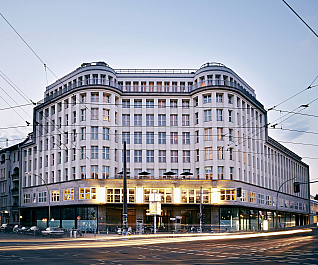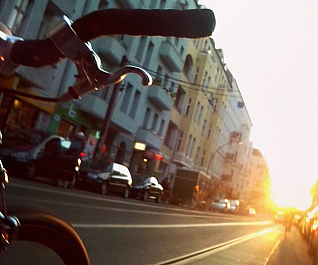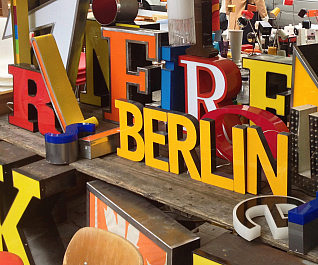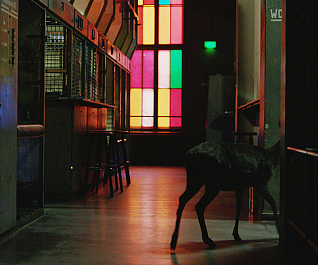“All free men, wherever they may live, are citizens of Berlin, and therefore, as a free man, I take pride in the words ‘Ich bin ein Berliner!’”
US President John F. Kennedy’s 1963 speech still rings true in 2015, more than twenty five years after the collapse of the Berlin Wall. Once the site of Cold War aggression between America and the Soviet Union, Germany’s historic capital and largest city has blossomed into an attractive metropolis that drew almost 12 million visitors in 2013 alone. Aside from the state’s booming economy and world-renowned scientific and educational institutions, the diverse and creative population has fostered an outstanding arts scene that spans everything from fascinating architecture, established museums, and public works to unbeatable nightlife and cuisine — it was even named the “City of Design” in 2005 by UNESCO. Despite a tumultuous past, the world city stands to prove the triumph of creativity in modern day. Whether you plan to visit for a few days or a few weeks, these tips will give you a taste of the unique melting pot that is Berlin:
 |
StayIn the world of design, there are few schools as iconic as the Bauhaus. Fully immerse yourself in this classic style at Soho House Berlin, originally designed by architects Georg Baur and Siegfried Friedlander in the 1920s as a Jonass & Co. department store. From the headquarters of the Reich Youth Leadership to the seat of the Communist Party’s Central Committee, the historic building has changed hands a fair amount since its construction. Now it offers a range of decadent rooms – including “tiny” accommodation for a brief solo trip or a massive loft for an extended family stay — accented by timeless furnishings, exposed concrete, and hardwood floors. Continue to bask in Soho’s elegant atmosphere at the hotel restaurant, which prides itself on an Italian-American bistro menu served all day long (to your table or to your room), or grab a drink from the bar. It doesn’t end there – finish a long day of shopping and sight-seeing with a refreshing swim in the heated rooftop pool followed by a visit to the hotel’s Cowshed Spa, which offers manicures, pedicures, massages, and more. |
 |
ArtIt’s no wonder that Berlin’s divided history has left a significant impression on its culture today — an impact that can be seen perhaps most vividly through a thriving scene of public artworks. There are plenty of excellent museums of contemporary art and design, but these landmarks paint the most accurate portrait of modern Berlin. Visit the Oberbaumbrucke Bridge between Kreuzberg and Friedrichshain to see “Rock, Paper, Scissors” by Thorsten Goldberg. At night, two round light boxes flash on opposite ends of the bridge, displaying the familiar gestures of the game of chance in a modern message about the absurdity of the decades-long Cold War. If you find yourself by the border checkpoint of Chausseestrasse, don’t miss “Kaninchenfeld” (Rabbit Field) by Karla Sachse, a series of 120 running, crouching, and hopping rabbit silhouettes laid in the pavement. Once regarded for their ability to burrow below the Berlin wall, the furry animals remain a symbol of freedom and peace from the city’s partition. |
 |
BikeLike many European cities, Berlin is known for its two-wheeled commuters and bike-friendly infrastructure. Rent a bike from Fat Tire then make your way to the 99-mile long bike path that traverses the former Berlin Wall. This may be the most fun and efficient way to get a glimpse at miles and miles of history – and art – at your own pace. More dedicated cyclists can go the length of the “death strip” while others may choose to visit select landmarks, like Checkpoint Charlie, the Reichstag, or the wall’s countless murals: some real gems can be found at “East Side Gallery” a 1.3 kilometer stretch along the Spree. This tour is also a vivid representation of life in a Berlin divided; memorial placards exist for the “victims of the wall” at various points along the path. “In a lot of places, the difference between East and West is still quite vivid.” |
 |
EatBreakfast is the most important meal of the day – a fact that Berliners live by. You will not find dainty fare if you wish to eat like a local. Chase a long night of dancing with breakfast at Alpenstückle, a delightful café serving South German cuisine. The country-meets-modern design offers a dose of both the new and the old with homemade pretzels to boot. Another scrumptious option is the Wintergarten café and restaurant at literaturHausBerlin, located just off of Berlin’s famous shopping street, Kurfürstendamm. Repurposed as both a bookshop and charming dining room, the turn-of-the-century villa makes for a fascinating – and delicious – visit. Choose from a standard breakfast menu that includes meat, cheese, eggs, and, of course, bread while you dine in the lush garden courtyard. Before you leave the city you have to try the beloved Döner Kebab, a Turkish meat and salad stuffed inside fluffy bread. While you can find this cheap local favorite just about anywhere, perhaps the best is served at Mustafa’s Gemüse Kabap – and it’s well worth the wait. Don’t forget about the world-famous jelly donuts, called pfannkuchen in Berlin (and Berliners everywhere else). Bäckerei & Konditorei Siebert is a traditional bakery that cooks up the best pastries in town. |
 |
ShopAlthough most shops are closed on Sundays, it may be the best day of the week to spend your money. There are several fleamarkets throughout Berlin, including ever-popular and overcrowded Straße des 17. Juni, but the Mauerpark Fleamarket has to be the best; a wide selection of Soviet-era relics, antique goods, vintage clothes, and lots vinyl make this a local favorite among hip students and bargain hunters alike. You could spend a whole day perusing stalls in this large industrial space on the site of the former Berlin Wall, though be sure to get there early to avoid the crowds. When you feel more like dropping than shopping, relax with a famous currywurst from any of the mobile sausage vendors that line the venue while you watch the bustle of passersby and take in the sounds of a Sunday morning in Berlin. |
 |
PartyBerlin is famous for many things, but its nightlife ranks high on the list. Be sure you stay long enough that you’re willing to forget a couple of nights (and days), because Berliners know how to party. It’s no secret that Berghain, located in a former power plant with an 18-meter high dance floor and room for 1500, is the epitome of Berlin nightlife; top-of-the-line techno and house music vibrate off the minimal steel and concrete interior once the guests start rolling in around 4 AM. As the city’s most famous EDM destination, Berghain is hard to top. |





